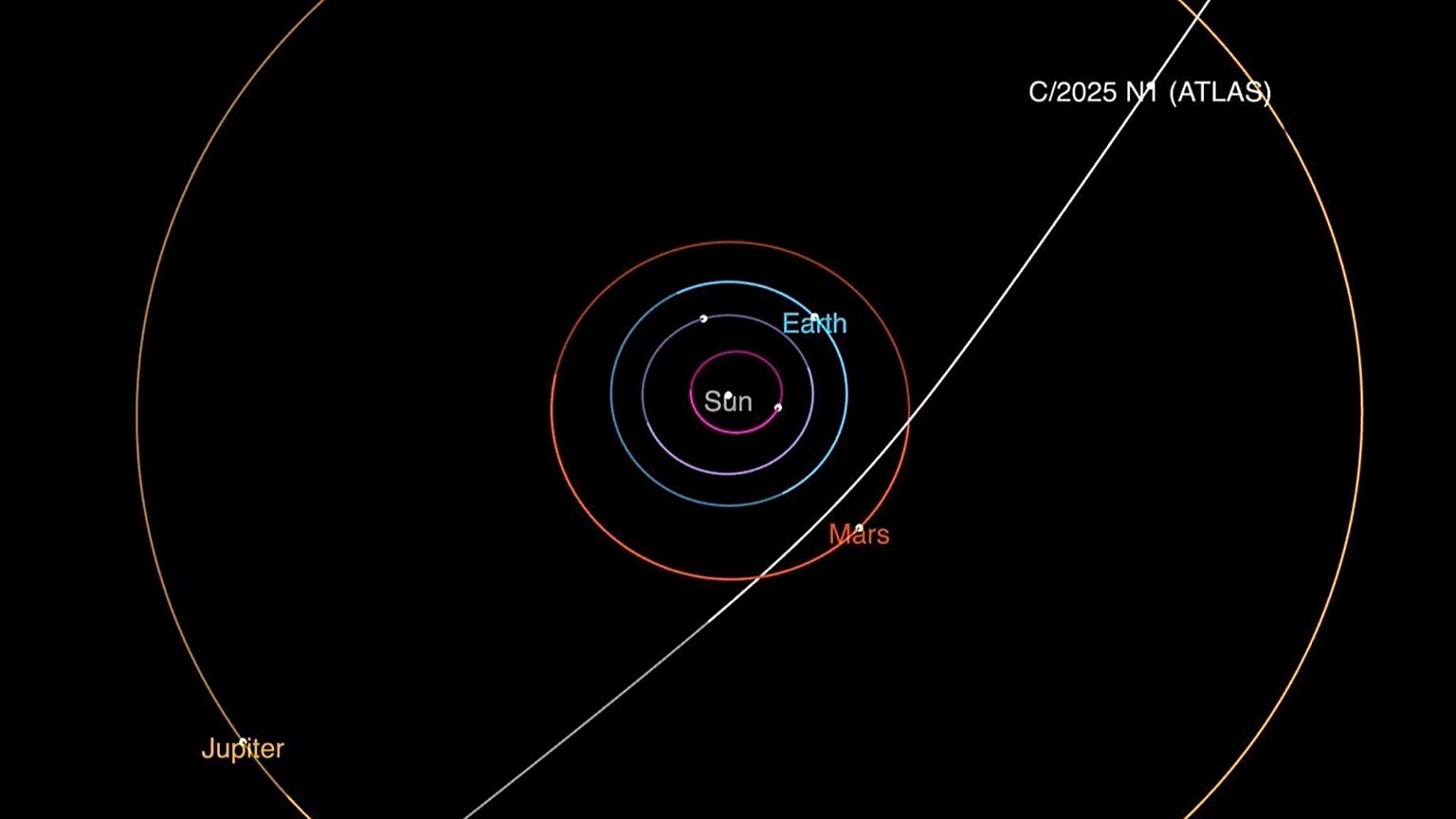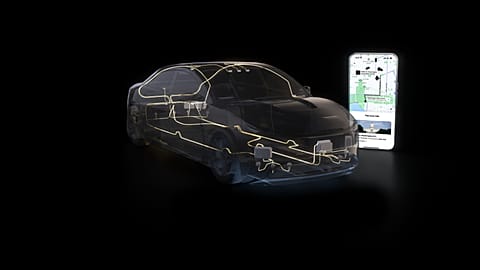While most scientists believe it’s a natural comet, one Harvard astronomer has suggested its unusual features could hint at signs of alien technology.
On 1 July 2025, astronomers using the ATLAS (Asteroid Terrestrial-impact Last Alert System) survey telescope in Rio Hurtado, Chile, detected a faint, fast-moving object unlike anything seen before.
The discovery, officially named 3I/ATLAS (C/2025 N1), marks only the third confirmed interstellar object ever observed - after ʻOumuamua in 2017 and 2I/Borisov in 2019.
But what exactly is 3I/ATLAS, where is it going, and could this strange visitor from another star be more than just a comet?
What is 3I/ATLAS?
NASA has officially identified 3I/ATLAS as a comet and not an asteroid on Wednesday, following detailed telescope observations that revealed clear signs of activity.
Scientists observed an icy core enveloped by a coma, the luminous halo of gas and dust.
This outgassing and the release of dust, mean that 3I/ATLAS is composed primarily of frozen compounds, which is consistent with comet behaviour.
The interstellar object is currently traversing the solar system, offering researchers a rare opportunity to study material from beyond our cosmic neighbourhood.
Its name was derived from its origins: “3” for the third interstellar object found, “I” for interstellar, and “ATLAS” for the telescope network that spotted it.
What makes it extraordinary is where it came from. Its speed and trajectory show that it’s not gravitationally bound to the Sun - meaning it must have originated in another star system and wandered into ours by chance.
How fast is it travelling and where is it going?
According to astronomers, 3I/ATLAS is racing through space at more than 200,000 km/h (around 61 km per second), and its speed is increasing as it approaches the Sun.
It’s following a hyperbolic orbit, which means that it’s moving too quickly to be captured by the Sun’s gravity.
“It’s going to kind of cruise through the inner solar system – in between Mars and Earth’s orbit – and then it will fly past the sun," Con Stoitsis, comet and meteor director at the Astronomical Society of Victoria, told The Guardian.
"This one is on what we call a hyperbolic orbit. So it’s not gravitationally bound to the sun. It’s travelling much too fast, and so it will just fly out the other side of the solar system," he added.
According to NASA, the closest 3I/Atlas will come to Earth is about 270 million kilometres.
Could it be something more than a natural object?
For most astronomers, 3I/ATLAS is an exciting but natural phenomenon. But one prominent scientist - Professor Avi Loeb, a theoretical astrophysicist at Harvard University - has advocated the need for a closer examination of the object.
Through the Galileo Project, which investigates potential evidence of extraterrestrial technology, Loeb has been asking provocative, eyebrow-raising questions about 3I/ATLAS’s origin.
In a series of scientific essays published on Medium, he argues that scientists should still consider whether the object could be an alien technological - an artificial probe or artefact from another civilisation.
In one essay titled “Does 3I/ATLAS Generate Its Own Light?”, Loeb questioned whether its brightness might stem from self-luminosity rather than reflected sunlight - a property unlike any known comet.
“The hypothesis in question is that the recent interstellar visitor to our Solar System, 3I/ATLAS1-10, is a technological artefact, and furthermore has active intelligence. If this is the case, then two possibilities follow: first, that its intentions are entirely benign, and second, they are malign, or somewhere in between," he wrote in a paper titled “Is the interstellar object 3I/ATLAS alien technology?”
"The consequences, should the hypothesis turn out to be correct, could potentially be dire for humanity, and would possibly require defensive measures,” he warned.
NASA has firmly rejected Loeb's perspective.
“It looks like a comet. It does comet things. It very, very strongly resembles, in just about every way, the comets that we know,” Tom Statler, NASA’s lead scientist for solar system small bodies, told The Guardian.
Loeb has since acknowledged in a blog post that “the simplest hypothesis is that 3I/ATLAS is a comet,” clarifying that his goal was to challenge assumptions rather than make firm claims.
“Let us instead maintain our childhood curiosity and seek evidence rather than pretend to be the adults in the room that know the answers in advance,” he wrote.
Will we be able to see 3I/ATLAS?
The comet will reach its closest approach to the Sun around 30 October, coming within 1.4 au (about 130 million miles), just inside Mars’ orbit.
Its size and physical properties are still being studied, but NASA says it should become visible again through ground-based telescopes in early December, once it re-emerges from behind the Sun.
This story was updated on 30 October with NASA's confirmation that it is a comet.



















